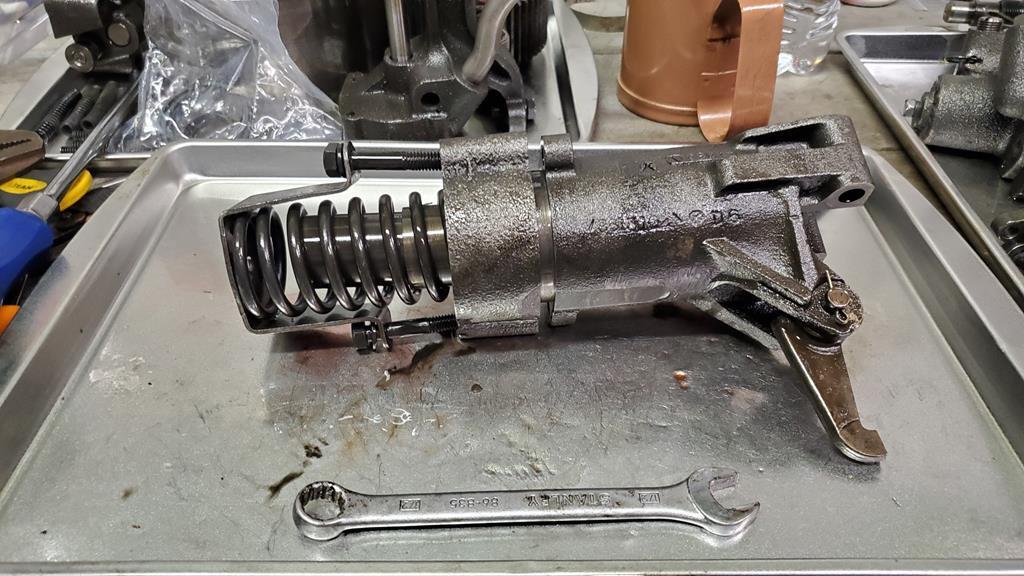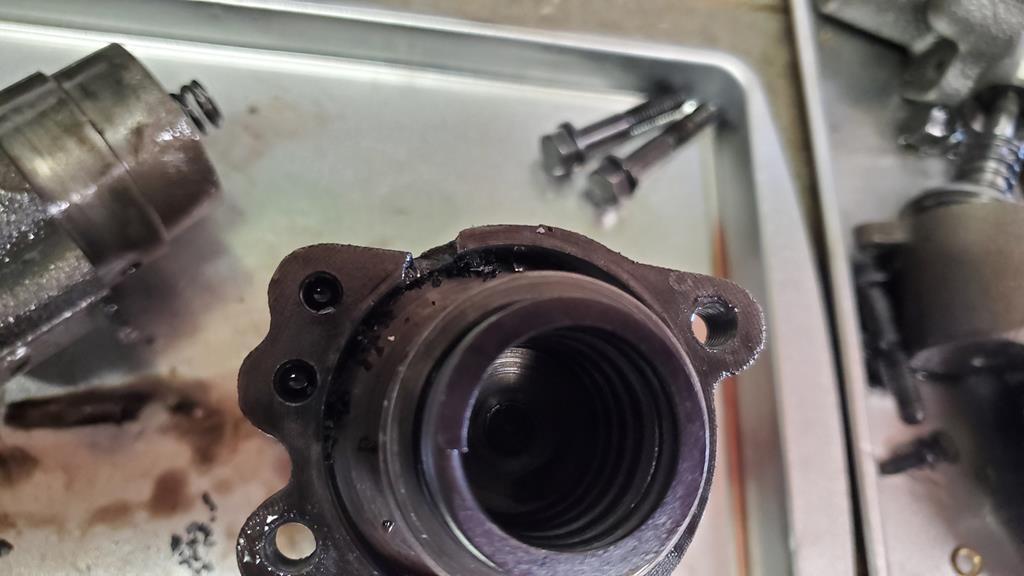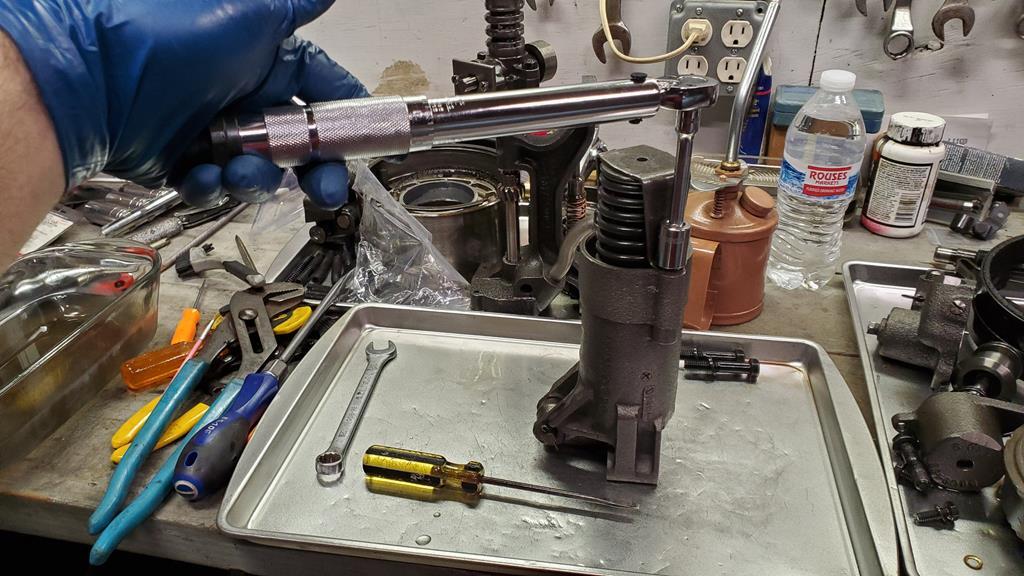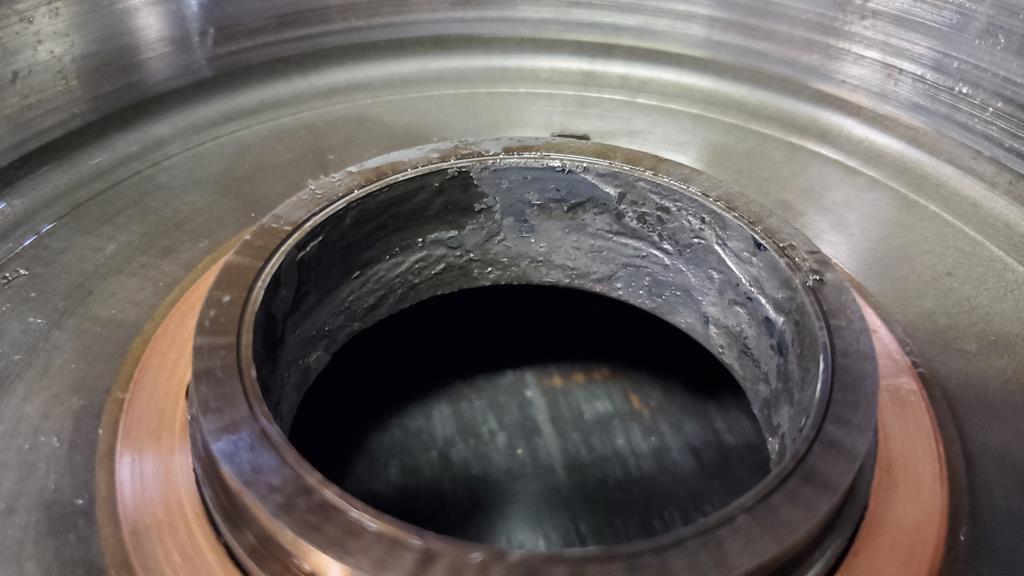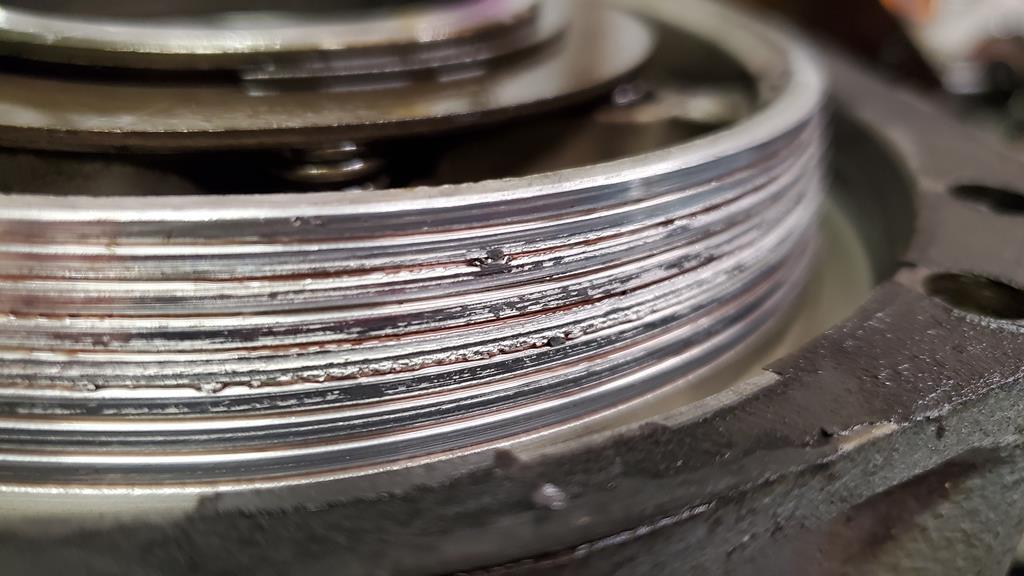Re the baking trays: when I worked at a Dodge dealership some years ago, we had one guy who strictly did auto transmission rebuilds and for him we had a specialist work bench that I always called the morgue table, because it had a central drain and each of the four sides gently sloped down so that the old ATF and any cleaning solvents drained into a collecon tank amd didn't pool on the work surface... Just like in, say, "Inspector Morse" when he's grimacing as the coroner slices open a corpse and the bodily fluids start flowing...
Re Darren's question, I will need to look that up, but I do remember more specifically that Ford (of England/Britain) was also brought in to produce Merlins** in the UK and that they insisted on making a fresh/ set of drawings to work from. The Rolls guys assumed this was to allow Ford to make the engines to looser tolerances than R-R's, but it was the opposite: FoMoCo's production techniques had moved faster (mass production) than (smaller company) R-R's and their work was tighter, more consistent and thus needed less rework/expert hand finishing.
** I was born in 1966 so grew up steeped in and fascinated by all things WW2 and aviation (my Dad's profession), and have been all my life, likely as were many others here. That said, reading this book drove home that truth of just how close we came to losing the war in the Batlle of Britain and what a totally pivotal role the Merlin (and thus, R-R, plus Supermarine, Hawker and all the suppliers) played in the eventual outcome. The story is complete with heartening examples of selflessness and cooperation between rivals, plus some equally nauseating anectdoes of small-mimdedness, often in the Government itself and the toffs who ruled it. Generalizations, I realize.
The book is "Rolls-Royce, The Magic of a Name, The First Forty Years of Britain's Most Prestigious Company, 1904-1944", by Peter Pugh, published 2000, Faber & Faber, ISBN 978-184831-924-0
Phil, re the slotted/flat blade screws GM used, safe to assume you'll use Allen/cap screws when you reassemble?
Re Darren's question, I will need to look that up, but I do remember more specifically that Ford (of England/Britain) was also brought in to produce Merlins** in the UK and that they insisted on making a fresh/ set of drawings to work from. The Rolls guys assumed this was to allow Ford to make the engines to looser tolerances than R-R's, but it was the opposite: FoMoCo's production techniques had moved faster (mass production) than (smaller company) R-R's and their work was tighter, more consistent and thus needed less rework/expert hand finishing.
** I was born in 1966 so grew up steeped in and fascinated by all things WW2 and aviation (my Dad's profession), and have been all my life, likely as were many others here. That said, reading this book drove home that truth of just how close we came to losing the war in the Batlle of Britain and what a totally pivotal role the Merlin (and thus, R-R, plus Supermarine, Hawker and all the suppliers) played in the eventual outcome. The story is complete with heartening examples of selflessness and cooperation between rivals, plus some equally nauseating anectdoes of small-mimdedness, often in the Government itself and the toffs who ruled it. Generalizations, I realize.
The book is "Rolls-Royce, The Magic of a Name, The First Forty Years of Britain's Most Prestigious Company, 1904-1944", by Peter Pugh, published 2000, Faber & Faber, ISBN 978-184831-924-0
Phil, re the slotted/flat blade screws GM used, safe to assume you'll use Allen/cap screws when you reassemble?







